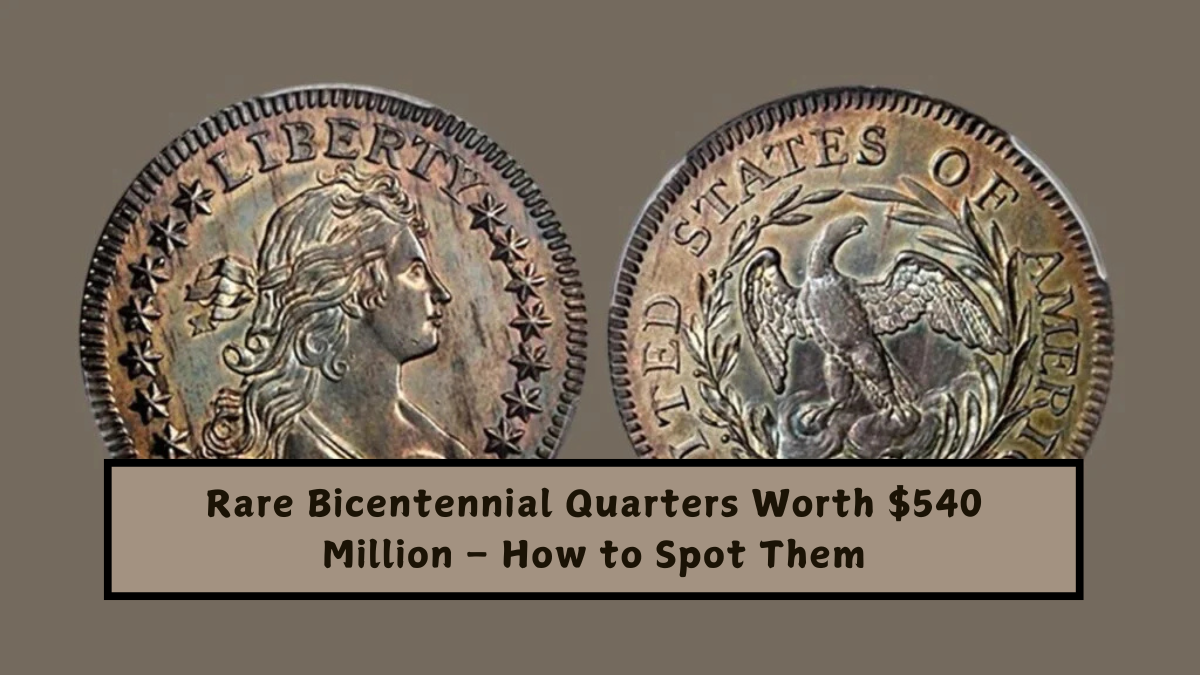Coins have always held more than just monetary value—they represent history, artistry, and culture. Among the many coins that have captured the imagination of collectors, the 1976 Bicentennial Quarter stands out as a unique and significant piece. This coin, minted to commemorate the 200th anniversary of American independence, carries not only historical importance but also distinct varieties that have driven collectors to seek out specific versions.
Some of these rare Bicentennial Quarters, featuring errors, limited mintages, or unique designs, have fetched astonishing prices—one even valued at $540 million at auction.
Rare Bicentennial Quarters Worth $540 Million
Let’s explore the stories behind these incredible coins and what makes them so valuable
1. Barber Dime
The 1894-S Barber Dime is one of the most mysterious and valuable coins in U.S. history. Only 24 of these dimes were struck in San Francisco, and fewer than 10 are known to exist today. The origins of this dime are shrouded in mystery—some believe it was gifted to friends of the Mint superintendent, while others think it might have been created as a sample commission.
One such dime is even said to have been spent on ice cream, which has made the remaining examples even more rare. In mint condition, an 1894-S Barber Dime could command up to $540 million, making it one of the world’s most sought-after coins.
2. Mercury Dime
The 1916-D Mercury Dime is renowned for its design and scarcity. Minted in Denver in 1916, this dime features Liberty wearing a winged cap, designed by Adolph A. Weinman. With only 264,000 coins struck, this particular dime is the rarest in its series.
Most of these dimes were circulated heavily, making them difficult to find in good condition. A well-preserved 1916-D Mercury Dime can sell for as much as $540 million, blending scarcity with iconic design and historical significance.
3. Liberty Seated Dime
The 1873-CC No Arrows Liberty Seated Dime is a key piece in the Wild West era of coinage. Minted in Carson City, Nevada, this dime is part of the transitional period in U.S. coin design. In 1873, the Mint introduced new weight standards and the “Arrows” design to signify these changes.
However, some dimes were struck before the changes, without the arrows, making them extremely rare. The Carson City Mint, tied to the silver boom of the era, adds to the allure of this coin. A well-preserved 1873-CC No Arrows Liberty Seated Dime can fetch up to $540 million, as it’s a rare piece of American patrimony.
4. Bicentennial Quarter
The 1976 Bicentennial Quarter is one of the most iconic modern U.S. coins. It was created to celebrate the 200th anniversary of American independence and features unique design elements, including the dual date “1776–1976.” Millions of these quarters were minted, but certain variations—such as error coins, silver-proof strikes, and specific mint versions—stand out as highly valuable.
Error coins, in particular, such as those with doubled die designs, silver strikes, and other unique features, have proven to be highly sought after by collectors. In near-perfect proof condition, these error quarters can command values as high as $540 million, demonstrating how even modern coins can reach legendary status.
Also Read: 1937-D Three-Legged Buffalo Nickel: Rare Coin Worth Thousands
What Makes the Bicentennial Quarter Valuable?
Several factors contribute to the immense value of certain Bicentennial Quarters:
- Error Design: Coins with unique errors, like doubled dies or missing elements, can drastically increase their value. For example, quarters with doubled dates or missing designer initials are highly coveted.
- Silver Content: Certain quarters were minted with silver, such as silver-proof strikes. These coins are more precious and rarer.
- Limited Mintage: Coins with limited mintages, such as the proof quarters made in San Francisco, carry significant value due to their scarcity.
- Condition: Like all collectibles, the condition of a coin plays a crucial role in determining its value. Near-mint and proof versions are especially prized.
Bicentennial Quarter Valuations
The 1976 Bicentennial Quarter comes in various types, each with different values:
| Coin Type | Mint | Value Range | Notable Features |
|---|---|---|---|
| 1976-S Silver Proof Quarter | San Francisco | $2,500+ | 40% silver, mirror-like proof finish |
| 1976-D Missing “FG” Quarter | Denver | $1,500–$5,000 | Error coin, missing designer initials |
| 1976-S Type 1 Reverse Quarter | San Francisco | $3,000–$6,000 | Rare reverse design, limited mintage |
| 1976-D Double Die Obverse Quarter | Denver | $1,000–$4,000 | Doubling on date and lettering |
| 1976-S Reverse Proof Finish Quarter | San Francisco | Up to $540 million | Rare reverse proof finish, highly limited |
Finding Rare Bicentennial Quarters
If you’re looking to discover rare Bicentennial Quarters, keep an eye out for these key details:
- Mint Mark: Seek out the “S” mint mark, which frequently denotes silver or proof coins.
- Designer Initials: On the reverse side of the eagle’s tail, the “FG” initials of designer Frank Gasparro are usually present. Missing “FG” quarters are particularly valuable.
- Doubling: Check the date and lettering for any signs of doubling, which could signify an error coin.
- Condition: Coins in pristine condition, especially those with proof finishes, are worth significantly more than circulated coins.
Conclusion
The 1976 Bicentennial Quarter, while seemingly common in appearance, hides valuable variations that make it a sought-after piece among collectors. From error designs to silver strikes and limited mintages, these quarters represent more than just currency.
They are tangible links to America’s rich history, blending artistry, rarity, and the stories of the nation’s journey. For numismatists, owning one of these rare versions is more than an achievement—it’s a connection to America’s past.
FAQs
Why is the 1894-S Barber Dime so rare?
Only 24 were minted, and fewer than 10 exist today.
What makes the 1916-D Mercury Dime valuable?
Its rarity and iconic design significantly enhance its value.
How valuable can the 1976 Bicentennial Quarter be?
In near-perfect condition, it can reach values as high as $540 million.

